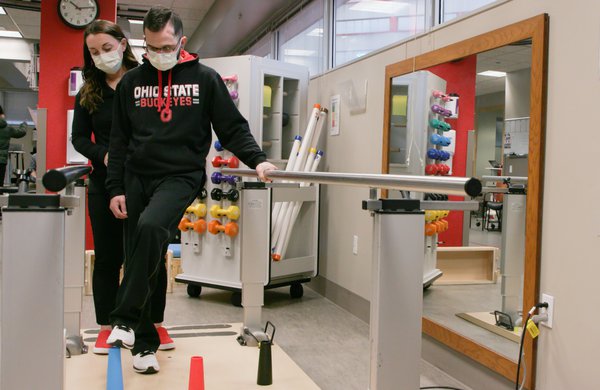Traumatic brain injuries, like concussions, once had been thought to stabilize after treatment, much like broken bones. But new research suggests they are chronic conditions that can prompt long-term effects that develop years later.
- MORE HEALTH
- Penn Medicine, Virtua Health open proton therapy cancer treatment center in South Jersey
- Eye drops factory linked to deadly bacterial infections cited for sterilization violations
- Why you should stop eating raw cookie dough and cake batter
"It was considered more like breaking a leg where you have a period of recovery but then once you reach a certain point then things are stable," researcher John Corrigan, director of the Ohio Valley Center for Brain Injury Prevention & Rehabilitation, told CBS. "We actually see people changing long after their original injury and, actually, the thing you're least likely to do is stay the same."
More than 1.5 million Americans suffer traumatic brain injuries each year. These injuries often lead to permanent disability even after treatment. Many patients struggle with memory, mobility, mental health and cognitive functioning issues.
An ongoing study, led by Ohio State University, suggests that traumatic brain injuries are chronic conditions that require lifelong support and treatment. In examining 25 years of data from 1,400 patients, they found that many patients began experiencing behavioral issues and declines in problem-solving years after suffering their injuries.
"As we were studying people longer, we began to see that a lot changed for them after five years," said researcher Jennifer Bogner, a professor of physical medicine and rehabilitation at Ohio State. "We saw some great improvements, but also some declines in many individuals. ... Unfortunately, those struggling with the long-term effects of a TBI are often unsupported after initial treatment, which exacerbates these issues."
The researchers said traumatic brain injuries should be treated proactively – just like other chronic conditions, like diabetes. They also called for a screening method to ensure people who have suffered traumatic brain injuries receive the care they need.
Corrigan said screening protocols and interventions particularly are needed at hospitals, substance abuse treatment centers, prisons and homeless and domestic violence shelters.
"Community resources and service centers need to know if the people they're working with have a history of traumatic brain injury," he said in a press release. "A lot of folks with brain injuries are trying to remain in their communities and live independently, and it's critical that those who can help them do that have a full understanding of how their brain injury affects their actions and abilities so they can provide appropriate accommodations."
These accommodations may include giving additional reminders to patients who may struggle to remember appointment times or providing strategies for better focus to patients who have difficulty paying attention in therapy sessions, researchers said.
Traumatic brain injuries often occur during sports, as a result of a fall, or during car crashes. The long-term effects of a moderate to severe injury can can include memory loss, headaches, seizures, dizziness, visual changes, fatigue, paralysis, mood swings, and difficulties with balance and speaking.
People who experience repetitive head injuries, such as athletes in high-contact sports like football or soccer, are more likely to develop the neurodegenerative disorder chronic traumatic encephalopathy, commonly known as CTE. Though scientists have found a clear association between the brain disorder and repetitive head traumas, they still don't understand the relationship enough to accurately predict how many head injuries it takes to develop CTE.
Even after receiving inpatient rehabilitation services for a traumatic brain injury, a patient's life expectancy is nine years shorter, the U.S. Centers for Disease Control and Prevention says. Brain injuries increase the risk of dying from seizures, drug poisoning, infections and pneumonia.
There were an estimated 64,362 deaths from traumatic brain injuries in 2020, according to the American Brain Foundation. Traumatic brain injuries are typically classified as either a primary and secondary type of injury. People with primary brain injuries experience the full extent of damage from their injury immediately. Those with secondary brain injuries have symptoms that change or worsen in the hours and days after the traumatic event.
If brain damage is severe enough, doctors may recommend starting rehabilitation treatments shortly after the initial injury. A rehabilitation program for a traumatic brain injury may include physical therapy, speech and language therapy, occupational therapy and caregiver training.


